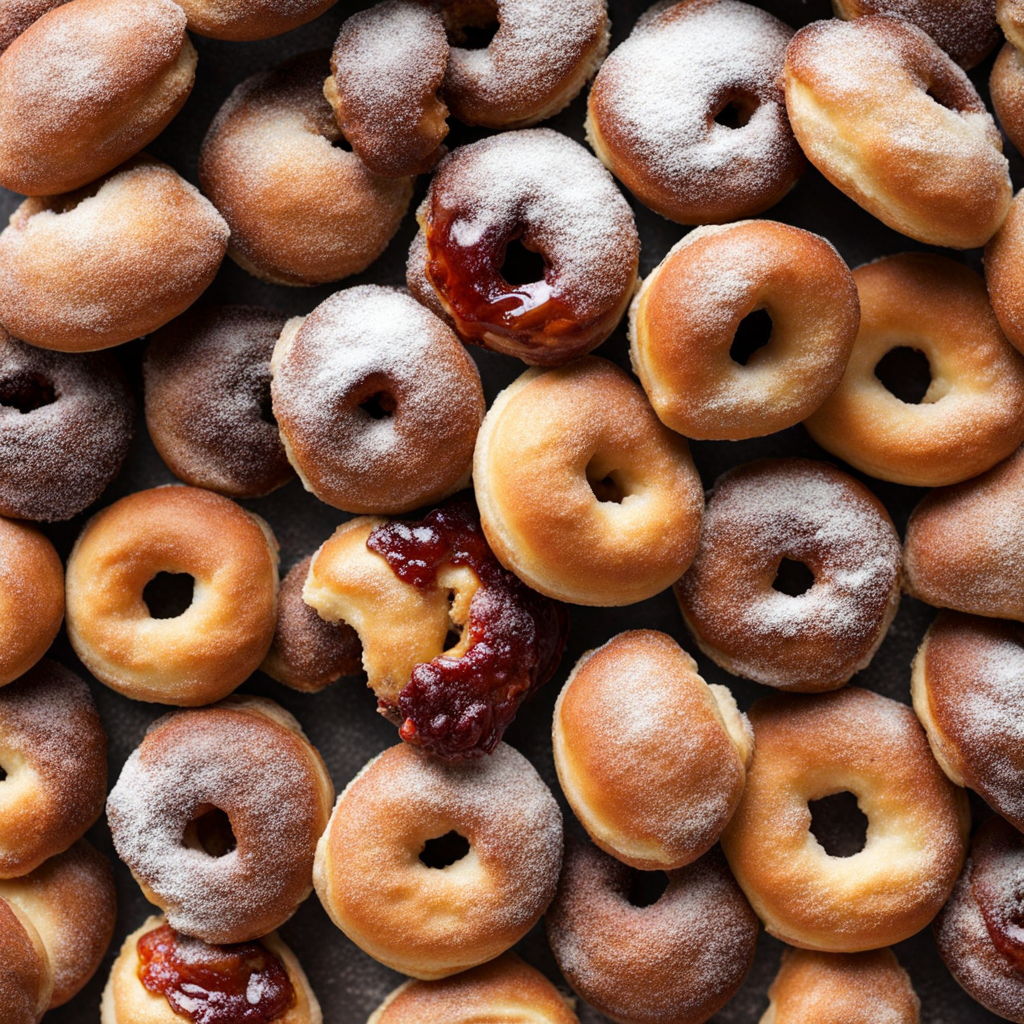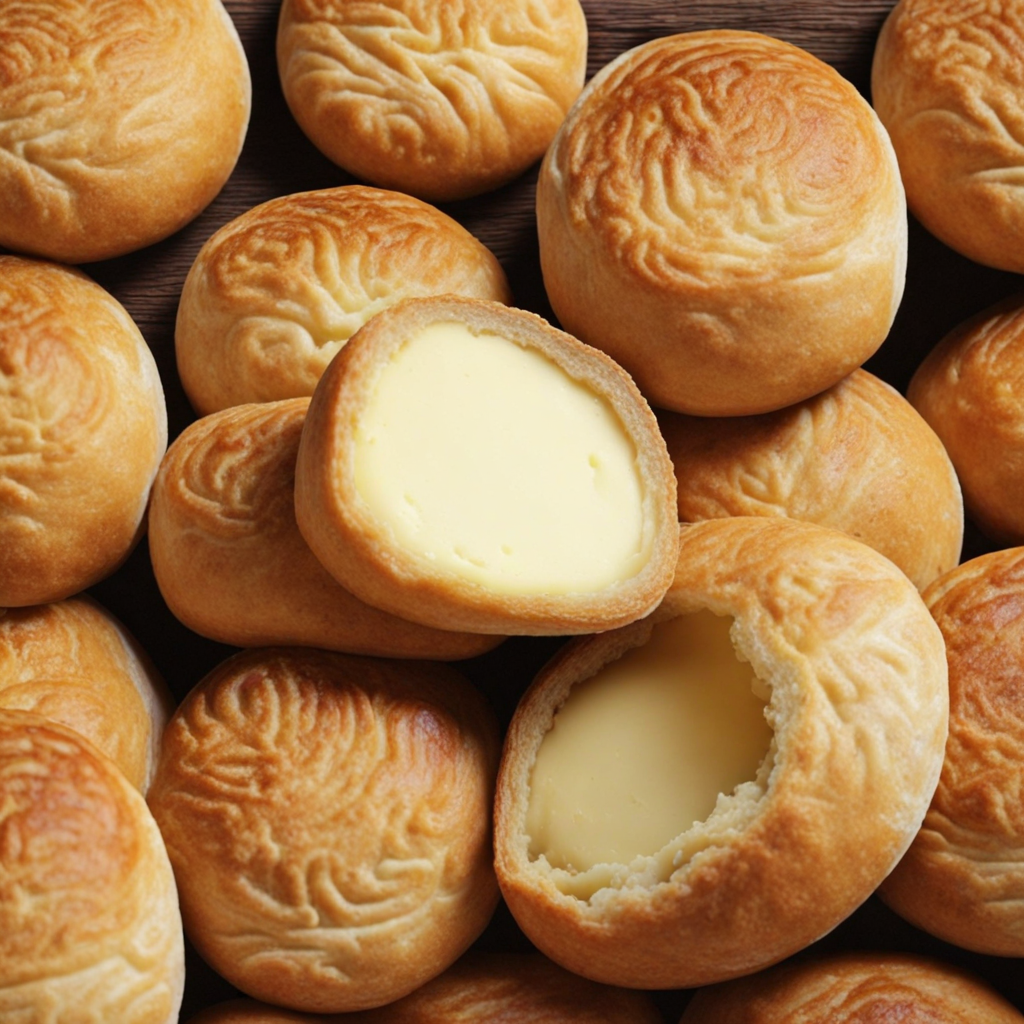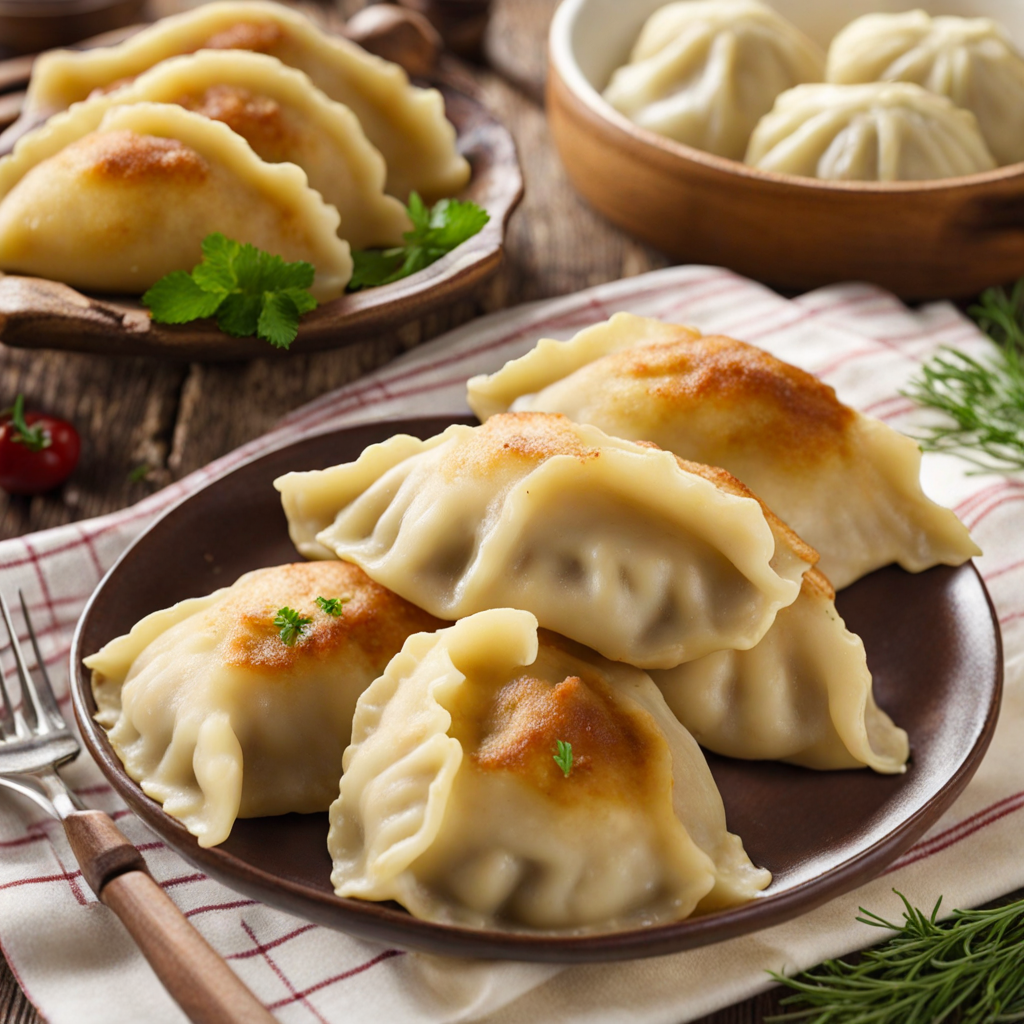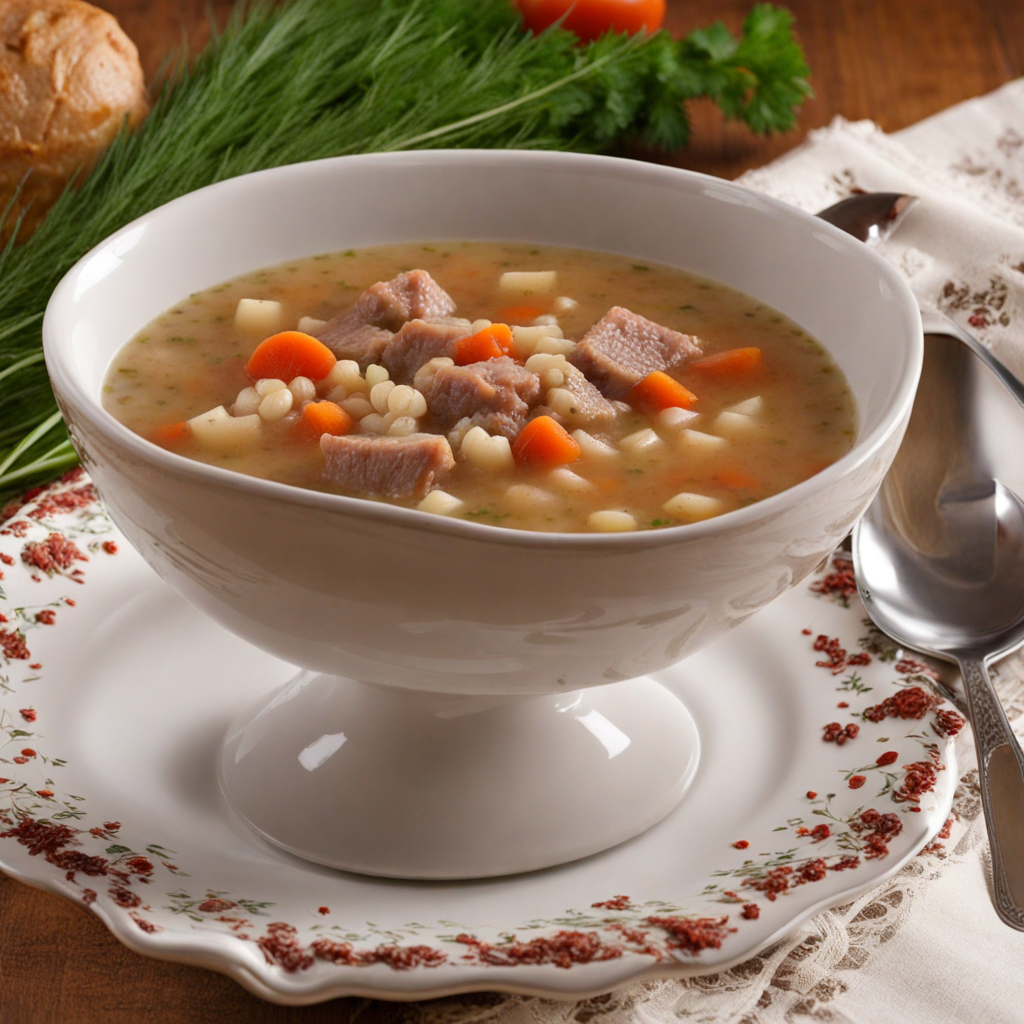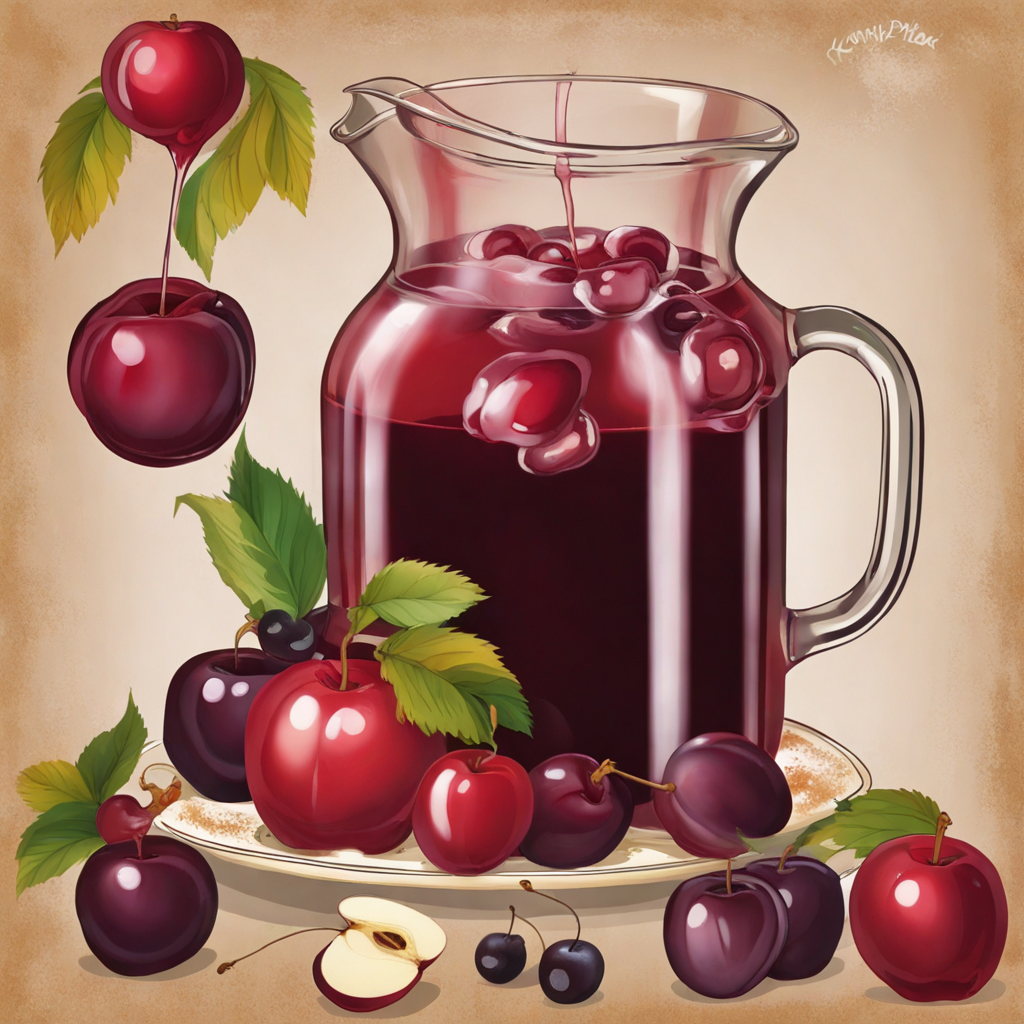Pączki
Pączki, pronounced "poonch-kee," are traditional Polish pastries that have captured the hearts of many beyond their homeland. These delightful treats are essentially filled doughnuts, but they hold a cultural significance that transcends their deliciousness. The history of pączki is deeply intertwined with Polish traditions, particularly the celebration of Fat Thursday, or Tłusty Czwartek. This day marks the last Thursday before Lent, a period of fasting in the Christian calendar. On this day, Poles indulge in pączki as a way to use up rich ingredients like eggs, butter, and sugar, which were traditionally restricted during Lent. Over the years, the popularity of pączki has spread, especially in areas with significant Polish populations, such as Chicago, where celebrations can attract long lines of eager customers. The flavor profile of pączki is rich and satisfying, characterized by a light and airy texture that contrasts beautifully with their decadent fillings. The dough itself is often subtly sweet, enriched with eggs and butter, which contributes to its tender crumb. When fried to a golden brown, pączki develop a slightly crisp exterior that gives way to a pillowy softness within. The fillings can vary widely, ranging from classic fruit preserves such as raspberry or plum to creamy custards and decadent chocolate. Some modern takes even include unconventional flavors like vanilla cream or lemon curd. Each bite offers a delightful explosion of flavor, with the sweetness of the filling complementing the
How It Became This Dish
The Sweet Legacy of Pączki: A Journey Through Time #### Origins of Pączki Pączki, pronounced "poonch-kee," are deep-fried pastries that have become synonymous with Polish culture, particularly during the period leading up to Lent. Their origins can be traced back to the Middle Ages, with the first known recipes appearing in Polish cookbooks in the 16th century. However, their roots may extend even further, intertwining with ancient culinary traditions across Europe. The word "pączki" is derived from the Polish verb "pączkować," meaning "to pack" or "to fill." This name reflects the pastry's characteristic of being stuffed, typically with sweet fillings. Initially, pączki were made with simple ingredients—flour, sugar, eggs, and butter—but as trade routes expanded and culinary techniques evolved, various fillings emerged, including fruit preserves, sweet cheese, and custards. #### Cultural Significance Pączki hold a special place in the hearts of the Polish people, particularly during the celebration of Fat Thursday (Tłusty Czwartek), which is the last Thursday before Ash Wednesday. On this day, indulging in pączki became a cherished tradition, serving as a way to use up rich ingredients such as sugar, butter, and eggs before the fasting season of Lent. The act of consuming these pastries has transformed into a joyous occasion, often celebrated with friends and family. In Poland, Fat Thursday is marked by long lines at bakeries, where pączki fly off the shelves. It is not uncommon for people to consume multiple pączki in one day, a testament to their popularity. This pastry has also become a symbol of Polish identity, especially for the Polish diaspora, who continue to celebrate their heritage through culinary traditions. #### Development Over Time As pączki evolved, so did their preparation methods and fillings. The traditional pączki were filled with rose jam, a nod to the aristocratic origins of the pastry. However, as the 19th century rolled in, new flavors began to emerge, influenced by regional ingredients and culinary trends. Today, you can find pączki filled with raspberry, blueberry, custard, chocolate, and even alcohol-infused fillings. The 20th century saw a significant transformation in the accessibility of pączki. With the mass production of ingredients and the rise of industrial bakeries, pączki became available year-round, although they remained particularly popular during the pre-Lenten period. The post-World War II era marked a significant moment for pączki in the United States, as Polish immigrants brought their culinary traditions with them. In cities like Chicago, Detroit, and New York, pączki became a staple in Polish-American communities. Bakeries began to cater to local tastes, introducing variations that incorporated American flavors, such as cream cheese and chocolate. #### Modern Interpretations In recent years, the popularity of pączki has surged beyond Polish communities. Food trends have embraced these decadent treats, leading to innovative takes on the traditional recipe. Gourmet pączki filled with exotic flavors such as matcha, lavender, and even bacon have emerged, appealing to a broader audience. Social media has played a significant role in the resurgence of interest in pączki. Pictures of beautifully decorated pastries fill feeds, inspiring both home bakers and professional pastry chefs to experiment with new fillings and toppings. Food festivals celebrating pączki have popped up across the United States, further solidifying their status as a beloved treat. #### Pączki in the Global Context Pączki is part of a broader category of filled pastries found in various cultures worldwide. For instance, the French have their beignets, while Italians enjoy bomboloni, both of which share similarities in preparation and filling. This cross-cultural connection highlights the universal appeal of fried dough and sweet fillings, a testament to the human penchant for indulgence. Moreover, the globalization of food has allowed pączki to transcend borders. With the rise of food trucks and fusion cuisine, one can now find pączki being served alongside international dishes, adding new dimensions to an already rich culinary tradition. #### Conclusion: A Timeless Treat Pączki are more than just a sweet indulgence; they are a cultural artifact that encapsulates the history, traditions, and resilience of the Polish people. From their humble beginnings in medieval kitchens to their modern-day status as a beloved pastry celebrated across the globe, pączki have undergone a remarkable evolution. As we savor each bite, we partake in a rich history that honors the past while embracing the future. Whether you enjoy a classic rose-filled pączek on Fat Thursday or indulge in a modern twist, you become part of a delicious narrative that continues to unfold. Pączki stand as a sweet reminder that food is not only sustenance but also a connection to our heritage and the enduring joy of communal celebration.
You may like
Discover local flavors from Poland


